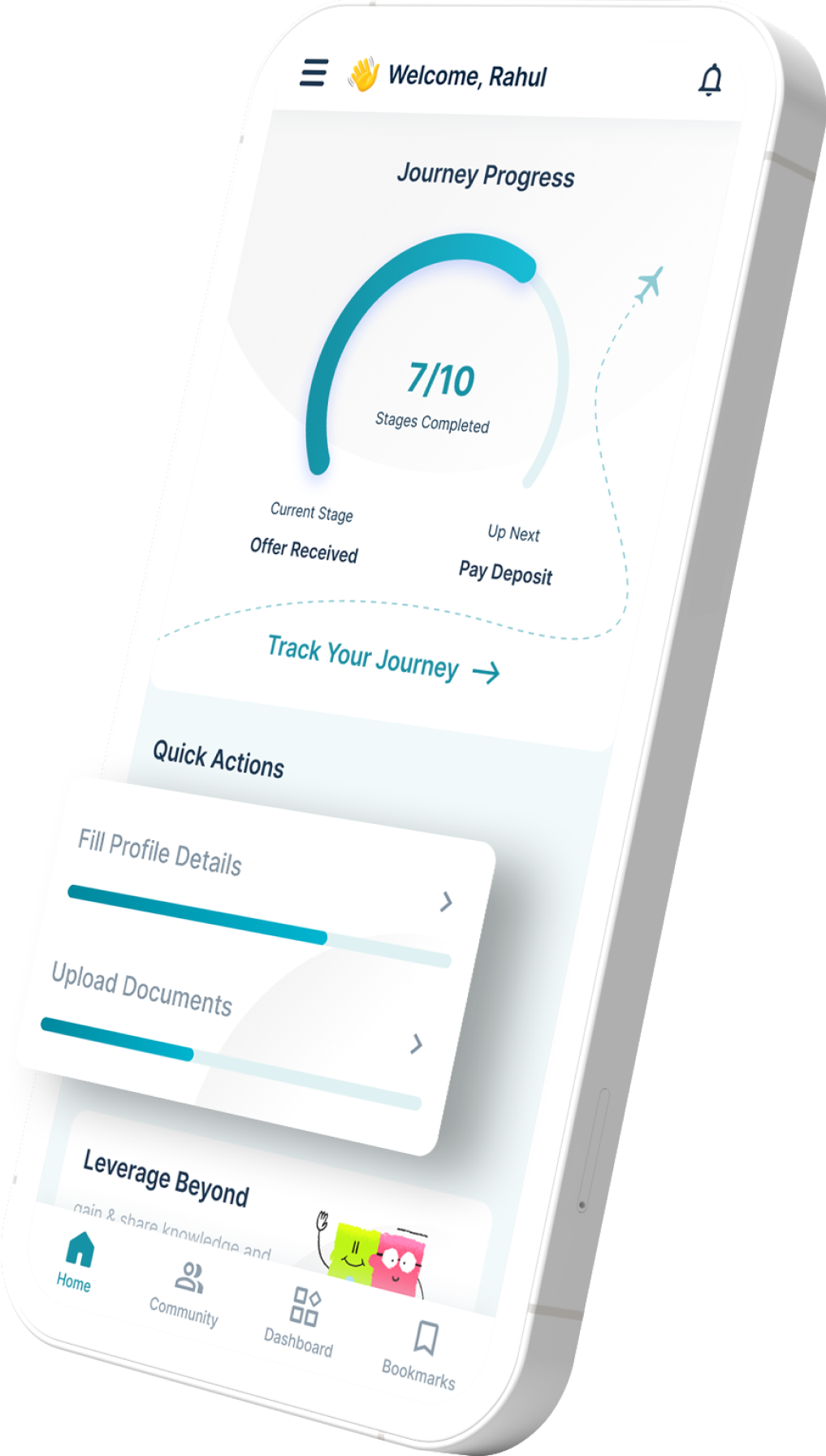If you’re planning to study in New Zealand, finding the right course and university is only the first step towards getting your admission ticket. Whether you aim to pursue a bachelor’s or master’s in New Zealand, particular admission intakes which have been devised by varied universities are divided into different periods of time in a whole academic year and are open for somewhere around 2-3 months. Even as the intake periods entail different academic seasons, a student must be acquainted with these admission deadlines while gearing up to apply for their dream university. In this blog, we have detailed the major admission intakes in New Zealand as well as the general application process and document the essentials you need to apply for your chosen study program in the land of Kiwis.
This Blog Includes:
Intakes in New Zealand Universities
Though the actual admission dates mainly vary as per the university as well as the program, there are certain common intakes that aspiring applicants must be familiar with while exploring the courses and top universities to study abroad in New Zealand. There are two major intakes in New Zealand corresponding to the two semesters for which universities are open for admission. These are:
| Semester | Session | Admission Intake Deadline* |
| Semester 1 | February to June | January/February |
| Semester 2 | July to November | July |
| Rolling Intakes | Anytime during the year | No Deadlines |
January/February Intake
January intake into different universities in New Zealand is for the sessions which begin at the very outset of the year. Additionally, the deadlines for applications are well before, at least, three months prior to the beginning. So, if you’re planning to apply for the January intake in New Zealand, it is better to start sending your application by November. Above all, you should have already gathered the whole array of documents you’re required to submit, like your scores on language proficiency tests such as IELTS or TOEFL. It also includes your previous education credentials, Letters of Recommendation (LORs) from a professional, a Statement of Purpose (SOP) outlining your interest in the course as well as your resume and related certificates.
| February Intake | |
| Deadline for applications | November – December 2024 |
| Application opening dates | November 2024 – January 2025 |
| Application closing dates | November 2024 – January 2025 |
| Course commences | February – March 2025 |
| Semester ends | June – July 2025 |
Timeline for January 2025 Intakes in New Zealand
If you are planning to study in New Zealand this January 2022, then here is a tabulated timeline that explains what needs to be done when for a smooth and chaos-free procedure. Having said that, applicants are always encouraged to begin planning for the January intake in March or April of the preceding year. Have a look at the timeline given below for more clarity:
| Timeline | Activities for the July 2022 intake in New Zealand |
| April 2024 to May 2024 | Make a list of universities and courses that you want to attend. Confirm important information such as the eligibility criteria, important dates, and admission procedure. |
| June 2024 to November 2024 | Appear for Exams like GRE, GMAT, IELTS, TOEFL or PTE |
| August 2024 to September 2024 | While prepping for and giving the above-mentioned exams, simultaneously apply to the Universities of your choice and upload the required documents as asked by the universities |
| October 2024 to November 2024 | Accept the Offer Letter to confirm your enrollment/intake in New Zealand university(ies) |
| November 2024 to December 2024 | Apply for a student visa as well as education loans or financial aid. |
| December 2024 to January 2025 | Buy your tickets, gather your documentation, and prepare for your departure. |
Benefits of February Intake
If you are applying during the February intake you can have a broader choice. You can choose from a variety of postgraduate and undergraduate programs. Moreover, starting your course in February means that you can complete your studies earlier than those who have completed their studies later. You can also benefit from smaller class sizes. You can also access more part-time work opportunities. Several institutions also offer scholarships during this month.
| July Intake | |
| Deadline for applications | May – June 2025 |
| Application opening dates | February-April 2025 |
| Application closing dates | Early July 2025 |
| Course commences | July – August 2025 |
| Semester ends | End of November 2025 |
July Intake
Considered the popular intakes in New Zealand among the major two, a majority of international applicants choose July intake to enter their dream university during the spring semester. From undergraduate to postgraduate as well as short-term programs, this intake of the July semester for which you must send your application by April to May.
Timeline for July 2022 Intakes in New Zealand
Applying to New Zealand universities is a time-consuming procedure. The application procedure takes around 8 to 10 months to complete. Applicants are encouraged to begin planning for the July intake in August of the preceding year. A step-by-step guide is provided below for students to have an idea of how to proceed.
| Timeline | Activities for the July 2022 intake in New Zealand |
| August 2024 to November 2024 | Make a list of universities and courses that you want to attend. Confirm important information such as the eligibility criteria, important dates, and admission procedure. |
| November 2024 to February 2025 | Appear for Exams like GRE, GMAT, IELTS, TOEFL or PTE |
| February 2025 to March 2025 | Apply to the Universities of your choice and upload the required documents as asked by the universities |
| March 2025 to April 2025 | Accept the Offer Letter to confirm your enrollment/intake in New Zealand university(ies) |
| April 2025 to July 2025 | Apply for a student visa as well as education loans or financial aid. |
| June 2025 to July 2025 | Buy your tickets, gather your documentation, and arrange your trip. |
Benefits of July Intake
Compared to the February intake, there are fewer applications sent. Therefore, there are higher chances of getting admission. Moreover, once you reach the country, it is easier for you to adjust due to the weather. The months are cooler. The July intake can also be a good option because you will have additional time to prepare for your studies. Moreover, starting your studies in July means that your academic calendar is aligned with your New Zealand calendar.
Other Intakes
While both February and July intakes are open for courses at all levels, there are also March, April and May intakes for vocational and short-term courses at universities in New Zealand. These are mainly summer semesters and welcome international students aiming to pursue a certificate, diploma, or associate degree and you can apply for November intake for short-term courses as well.
Which Intake to Choose?
One thing that puzzles the students always is to figure out which intake to choose or opt for the intended course. This may get a little tricky if you’re not well-versed with the whole intake process. To make a better decision we will have a look at the different factors you must consider to make the right decision regarding when to send the application.
- Universities in New Zealand do not necessarily provide the same program over multiple intakes. But, the university may proffer the option of a second intake for the course or program. The early availability of your intended course must be prioritized in any case.
- Additionally, as the intakes provided by the different institutions can differ, a student has to hurry up with all the essential filling of application and other documents months before the deadline approaches. If you are not able to pick up with the pace or haven’t yet received your academic qualifications, you can apply during the different intake periods.
- It must be noted that many universities have varied intake capacities during different periods. Your chances to secure admission are brighter when institutions announce to take in more students compared to times when only a smaller batch is granted admission.
Document Checklist for Intakes in New Zealand
Now that you are familiar with the major intakes in New Zealand, here is the complete document checklist you will need to ensure while applying for admission to a university in the country:
- Certificate of English proficiency test scores IELTS, TOEFL, PTE scores as proof of your competence in the English language.
- At least 2-3 reference letters or letters of recommendation signed by your professors or professional references.
- Carefully draft your statement of purpose which should be well structured.
- Begin the process of applying for the New Zealand student visa once you get the acceptance letter.
- Proof of sufficient funds as well as scholarship-related documents if you have applied for any.
- GMAT/GRE scores if you are applying for postgraduate degree programs.
- Resume/CV
To know more, register here for Leverage Edu UniConnect by creating an account and interacting one on one with top university representatives, apply with one click and secure on-spot offers and scholarships.
FAQs
There are in total 2 intakes in New Zealand namely the July intake and the January intake.
If you want to study in New Zealand, you need first to understand that there are two intakes, one in February and one in July. While overseas students apply for admission to both terms, the July intake is their preferred option, and the majority of admissions occur during this session.
Even after a ten-year gap, a student can apply for a visa to New Zealand provided he or she can provide convincing evidence of what he or she has been doing in terms of job experience, studies, and skill set.
Because of the growing amount of immigrants, obtaining a New Zealand PR is becoming increasingly difficult. However, there is a way for students to obtain New Zealand PR, and their qualifications help them. After the student visa expires, the student wishes to get permanent residency in order to work in the nation.
For a New Zealand study permit, a minimum IELTS band of 6.5 is required. A study visa for New Zealand requires students to achieve a minimum of 5.5 in each of the four IELTS bands, with an overall minimum score of 6.0 or higher for undergraduate programs.
New Zealand has two main intakes. That is the January intake (autumn intake). The deadline for this intake is between August and September. Another intake te country has is the July intake. This is also called the spring intake. The deadline for this intake is between February and March. There are also rolling intakes held by some universities.
New Zealand accepts a 10-year gap. However, although the gap is accepted, a student will have to show the reason for the gap. For example, a medical illness.
Yes. A few universities in New Zealand has November intakes. The deadline for applications, and the requirements vary by institution.
We now hope that this blog has provided you with key details that you must remember while you apply in different intakes in New Zealand. Confused about the admission process of your chosen course and university, our Leverage Edu experts are here to help you throughout the application process from drafting impressive SOP and LORs to guiding you in finding the right scholarship! Sign up for a free session with us today!

 One app for all your study abroad needs
One app for all your study abroad needs
























 45,000+ students trusted us with their dreams. Take the first step today!
45,000+ students trusted us with their dreams. Take the first step today!


